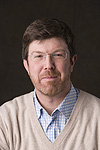Giorgio Apollinari appointed new director of LARP
 |
|
Giorgio Apollinari
|
Giorgio Apollinari, currently head of Fermilab's Technical Division, has been selected as the new director for the LHC Accelerator Research Program, or LARP. Apollinari will help during a short transition period by serving as division head until a replacement has been found.
"Giorgio was selected from among many highly qualified applicants for the LARP director position," said Stuart Henderson, associate laboratory director for accelerators. "This selection was based in large measure on his exemplary leadership of the Technical Division over the last six years."
Apollinari joined Fermilab in 1998 as the local manager of the construction of the CMS muon chambers. In 2005, after the completion of the chambers and their installation at CERN, he became the head of the new Superconducting RF Department before accepting a nomination to head of the Technical Division in 2007.
LARP coordinates U.S. activities related to the LHC accelerator at Fermilab, Brookhaven, Lawrence Berkeley and SLAC national laboratories; it has also collaborated with the University of Texas at Austin and Old Dominion University in Virginia. It is currently undergoing a transition from a program focused on research and development to one that produces accelerator hardware to be incorporated into LHC upgrades.
"After six years as division head, I believe that there is an opportunity and a chance to do something different, which is working on the LARP program and helping it transition to a project phase to make sure the LHC will keep performing and providing physics opportunities for research," Apollinari said.
Eric Prebys, who has served as LARP director for five years, said it is this transition phase that prompted the move to a new director.
"I think Giorgio is an excellent choice," Prebys said. "His experience managing the Technical Division and several large projects are very well suited to the LARP project moving forward."
Prebys said he'd like to increase his involvement in the Mu2e experiment and would also like to stay involved with LARP after he steps down as director.
"Eric did a great job in running LARP for the last five years, and he has been the one that has pushed the accelerator physics part of the program to very good results," Apollinari said.
The importance of the LARP collaboration goes beyond accelerator R&D, he said.
"I know we will have to work very hard, and maybe even benefit from a sprinkle of good luck, as we move forward to complete our contributions to the unique and outstanding research tool that is the LHC," Apollinari said. "Because at the end, whatever we produce—magnets, cavities, detectors—they are all tools to understand and resolve the deeper hidden secrets of nature."
—Laura Dattaro
|